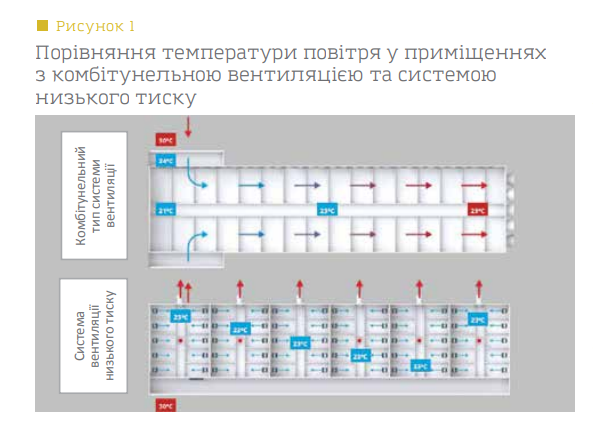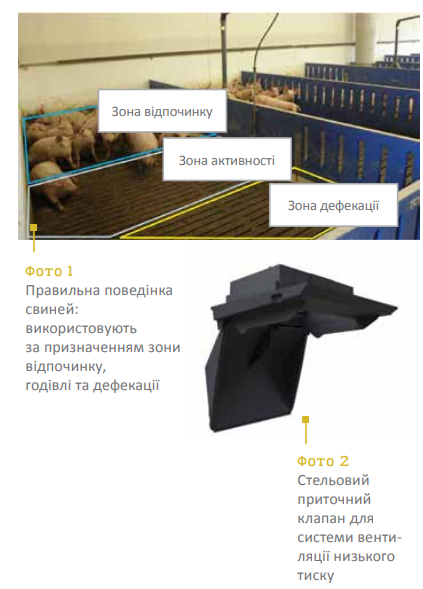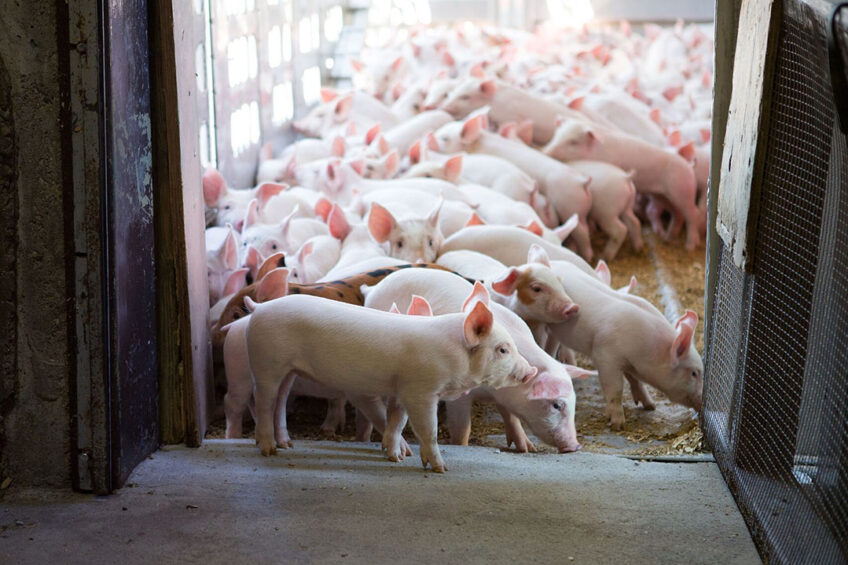Proper ventilation
In the cold season, the main purpose of ventilation is to remove harmful gases from the livestock building. At the same time, the air that gets into it is cold, so the ventilation system heats it, mixing it with the warm air in the room. In this way, it is possible to ensure the correct temperature and air velocity in the animal housing area. In summer, the ventilation system removes excess heat and creates a cooling effect by circulating fresh air around the pigs. Air velocity and cooling are the traditional means of reducing indoor temperature. Generally, the principle of tunnel ventilation is used to increase air velocity and cooling in the heat.
The tunnel ventilation system sucks air through cooling mats on one side of the room and directs it to the opposite side of the building. As a result, the pigs are cooled due to the air velocity. However, the tunnel ventilation system has some limitations that prevent the creation of a uniform microclimate in the animal house:
— Generally, the temperature at different ends of the farm is different because the air flow gradually heats up as it moves through the room. This means that the performance and welfare of the pigs will also vary.
— The tunnel ventilation system has additional requirements for the layout of the rooms and pens so that the air movement reaches the entire area of the pigs. The low pressure ventilation system takes into account the limitations of the tunnel system, because the air flow is directed directly to the animals (Figure 1).

Comparison of air temperature in the premises with combi-tunnel ventilation and the low pressure system
(The system of ventilation low pressure at the bottom and Combitunnel system type ventilation at the top)
Low pressure ventilation system
The low pressure ventilation system "takes" air through ceiling inlets and directs it directly to the animals. Ceiling inlets are designed to create maximum air velocity during hot periods. In the cold season, they also provide air mixing before it reaches the animal housing area. The air enters through well-insulated ceiling shafts. Thanks to this, it does not heat up before it gets into the animal house. If additional air cooling is needed, cooling mats are installed in the ceiling shafts. Alternatively, in hot and dry climates, high-pressure cooling on ceiling inlets can be used.

Recreation area
Area of activity
Defecation area
Photo 1. Proper behavior of pigs: use the designated area rest areas, feeding and defecation areas
Photo 2. Ceiling supply valve for low pressure ventilation system pressure
Correct behaviour
The correct placement of ceiling inlets above the pens creates a favorable uniform microclimate for all animals in the room. Accordingly, animals properly separate and use the areas for rest, feeding and defecation in the pen (photo 1). Air evenly enters the room. This means that all pigs are in the same ventilation conditions. This provides equally good conditions for growth and production performance of all animals. Compared to tunnel ventilation, the low pressure system does not have such high demands on the building and equipment of the premises. Ceiling inlets are placed in relation to the pens so that the air falls directly on the animals. This means that the construction of buildings and equipment (e.g. pens with solid partitions) do not create obstacles to the air flow. Thanks to ceiling inlets, it is possible to create the same cooling effect (for example, 3 m/s) as with a tunnel ventilation system. The main difference is that the cooling effect can reach a maximum in the area where pigs are kept.
Optimization of investments
A significant part of pig farms is located in regions where the ventilation system must cope with large temperature differences both during the day and throughout the year. Therefore, there is a need to install systems with two types of inlets, for example, ceiling or wall inlets for cold periods and tunnel inlets for hot periods.
The low pressure system allows the same ceiling inlets to be used both in cold weather and in hot weather (photo 2). This optimizes investments and reduces operating costs, including maintenance costs.
Biosafety
Nowadays, when choosing a ventilation system for pig farms, the level of infection control is taken into account. The low pressure system provides better protection of the livestock. After all, unlike tunnel ventilation, when the air moves through the pens through the entire building, the low pressure system supplies air directly to the pigs. The pens can be separated by solid partitions for better protection, which is impossible for tunnel ventilation. At the same time, the low pressure ventilation system allows to install one of several options for centralized filtration of incoming air at the inlet valves.
LLC "AgroClimate Ukraine":

2 660 Kyiv, Ukraine;
19, Yevhen Sverstyuk Street, office 914

+38 067 386 26 91, +38 829 52 62, +38 067 537 36 67

volodymyr.brovchenko15@gmail.com





.jpg)